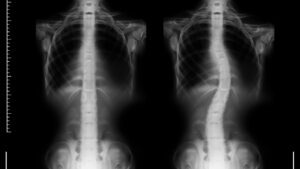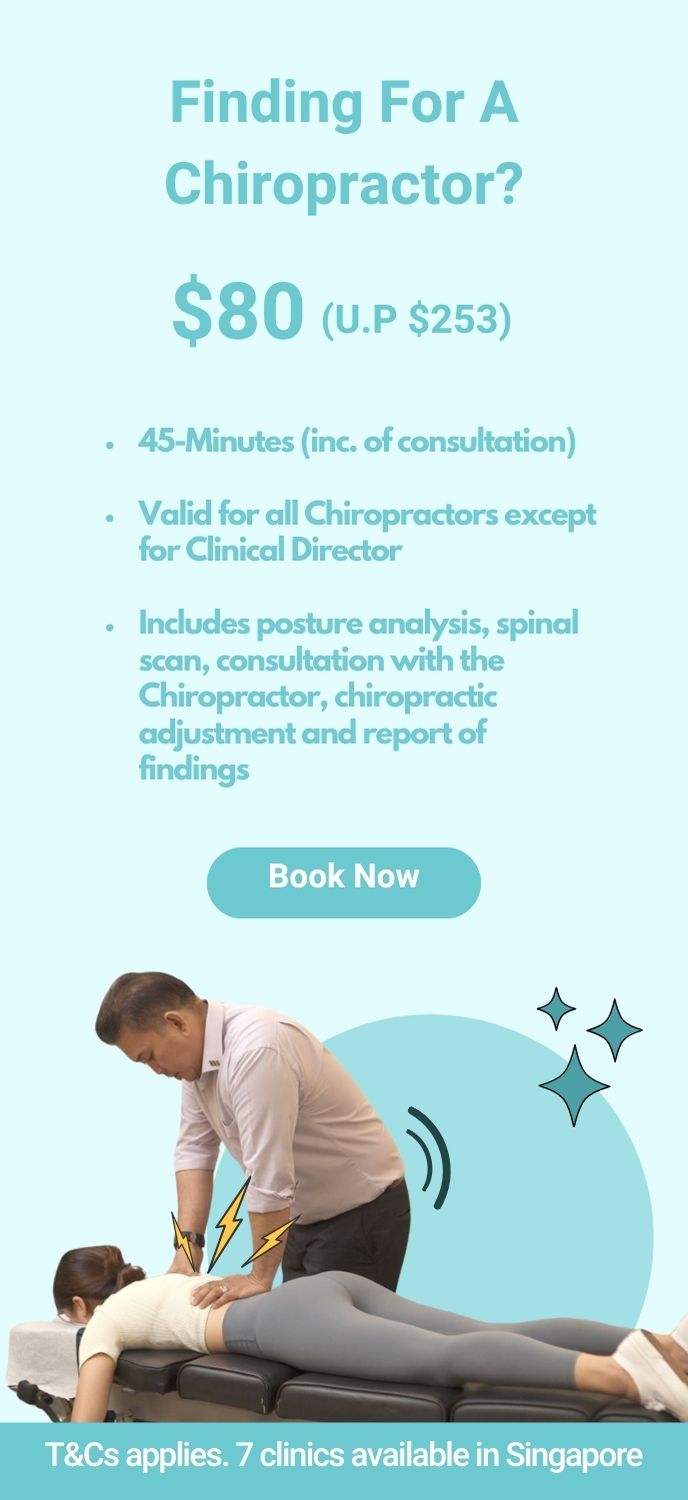
Most people know that slouching at a desk or craning your neck at your phone isn’t ideal, but few truly realise the long-term impact of poor posture on the spine. Over time, these habits can cause a range of structural and functional changes to your back, many of which are not easily reversed.
The spine begins to lose its natural curves
The human spine has three natural curves – at the neck, upper back, and lower back – designed to absorb shock and support body weight. Poor posture, such as slumping in your chair or consistently leaning forward while using your phone, can slowly alter these curves. Over the years, the neck may begin to protrude forward, the shoulders round in, and the lower back loses its inward curve. These changes lead to misalignments that put undue pressure on joints, discs, and muscles.
In Singapore, where many spend long hours sitting in office chairs or commuting on public transport, these changes are especially prevalent. The body’s alignment shifts gradually, and before you know it, what was once a minor habit becomes a source of chronic discomfort.
Muscles and ligaments are put under constant strain
Poor posture doesn’t only affect the bones; it also impacts the surrounding soft tissues. Muscles that should be relaxed during daily activity may become overly tight, while others weaken due to underuse. For instance, the chest muscles might tighten while the upper back muscles weaken, leading to a hunched upper body.
Chronic strain can also lead to inflammation in ligaments and soft tissues, especially in the lower back. When this happens, people often begin to experience persistent aches and stiffness. For those looking for back pain treatment in Singapore, this kind of muscular imbalance is a common cause of the discomfort they are trying to address.
Intervertebral discs start to degenerate
The intervertebral discs act as shock absorbers for the spine. With prolonged poor posture, these discs can become compressed unevenly. Over time, this may lead to disc degeneration, bulging discs, or even a herniated disc (a.k.a slipped disc). These conditions often cause pain that radiates down the arms or legs, as the bulging disc may press on surrounding nerves.
Ageing is already a factor in disc degeneration, but poor posture accelerates the process. In young working adults, signs of premature disc wear are becoming more common due to sedentary lifestyles and improper ergonomics at workstations.
Nerve impingement and chronic pain can develop
As the spine’s structure becomes increasingly misaligned, the risk of nerve compression rises. Pinched nerves, especially in the neck and lower back, are common consequences of years of slouching and forward head posture. This can cause numbness, tingling sensations, or sharp pain in the arms or legs.
Eventually, chronic pain may set in, making even everyday activities like walking, climbing stairs, or standing for long periods uncomfortable. Seeking a lower back pain specialist early can help identify nerve-related issues before they become debilitating.
Breathing and digestion may be affected
While it may not be obvious, the spine plays a role in many systems of the body, including breathing and digestion. A hunched posture can compress the lungs and diaphragm, reducing the efficiency of your breath. You may find yourself feeling tired more easily or struggling with shallow breathing.
In addition, slumping forward after meals can compress the abdominal organs, leading to indigestion or bloating. These secondary issues can add to your discomfort and reduce your overall quality of life.
Your body starts to adapt to dysfunction
Perhaps the most insidious effect of poor posture is how the body starts to accept dysfunction as the norm. When poor alignment becomes habitual, the body adjusts to this “new normal.” This often leads to compensatory movements, where other muscles and joints take on roles they weren’t designed for.
For instance, you might notice that your hips or knees ache more frequently, even though the root of the problem lies in your spine. These compensations can snowball into full-body imbalances that are much harder to correct later in life.
Early care can reverse or prevent further damage
The good news is that the spine is responsive to change. With early intervention, many of the effects of poor posture can be addressed. Chiropractors play a crucial role in supporting better spinal alignment, assisting in relieving pressure on joints and nerves, and rebalancing muscle tension.
Nowadays, more individuals are turning to chiropractic care as a proactive measure due to its non-invasive approach. Ergonomic assessments, posture education, and regular adjustments can go a long way in maintaining spinal health and preventing further deterioration.
Reclaim your spinal health today
If you’ve been dealing with back discomfort, tension, or posture issues that have built up over the years, it’s not too late to take action. At Healing Hands Chiropractic, we help you identify the root causes of your pain and support your journey toward better spinal alignment, mobility, and long-term wellness. Book a consultation with us to explore how chiropractic care can help in your posture, mobility, and overall spinal health.



